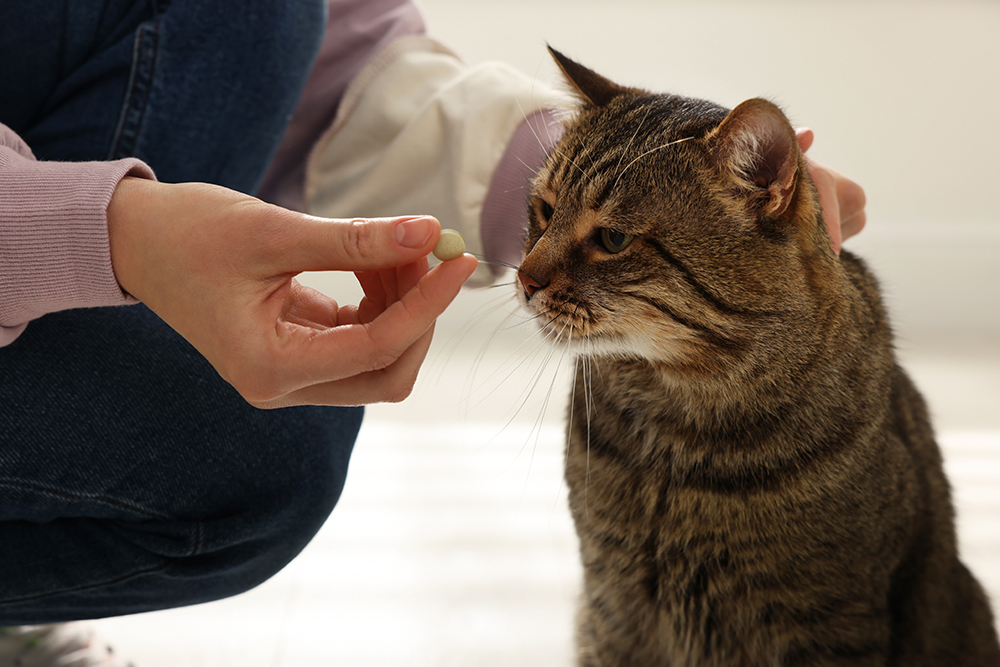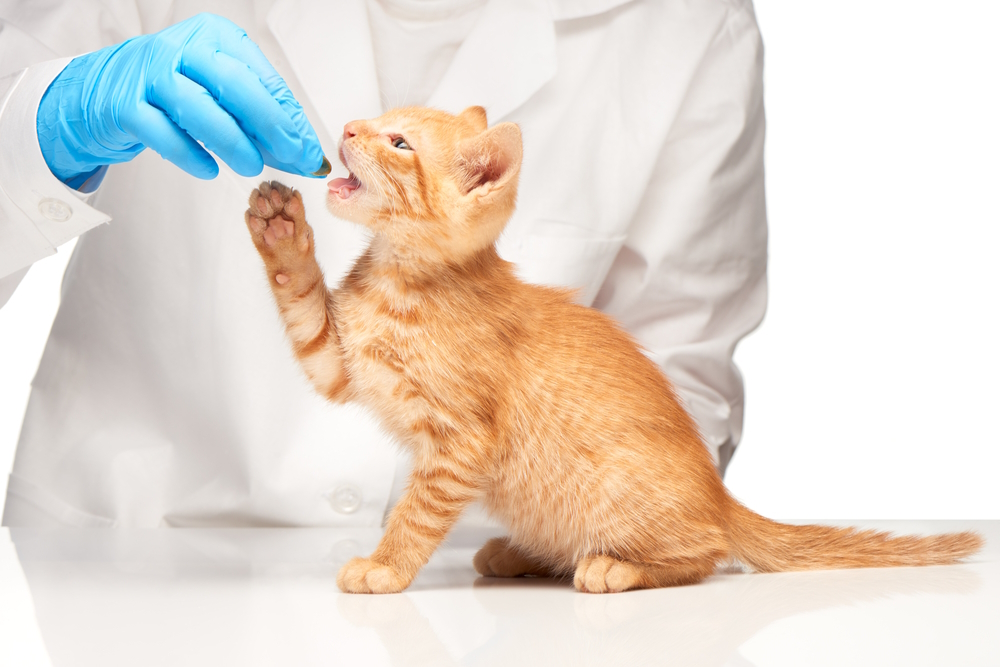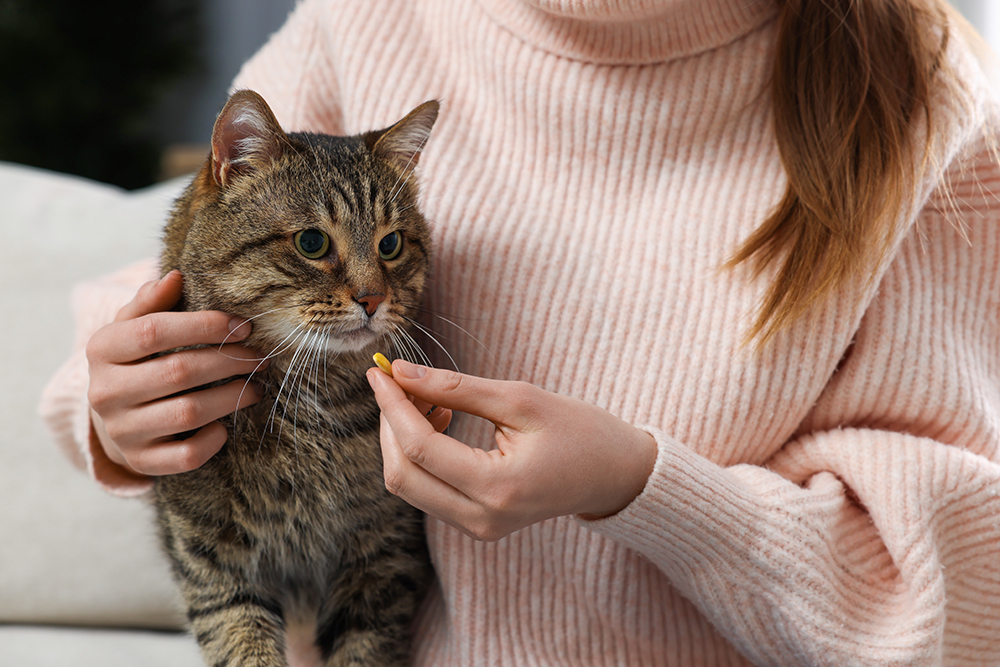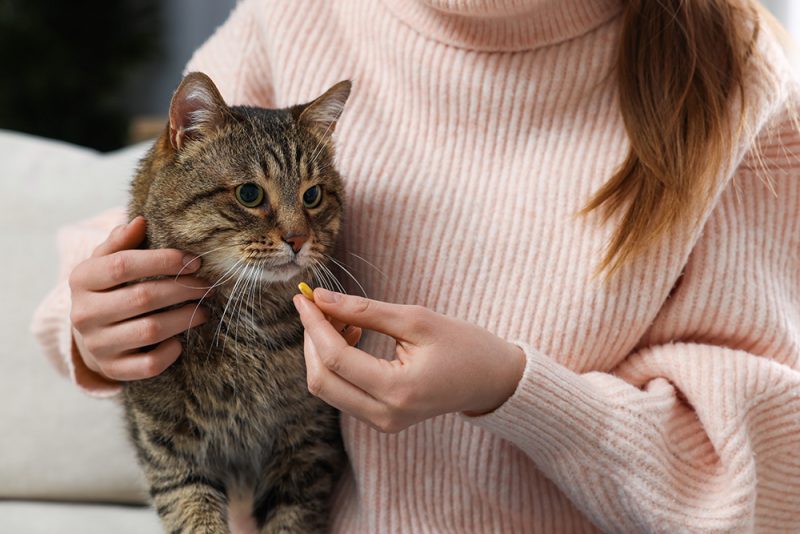Click to Skip Ahead
Buprenorphine is a prescription-only drug that can be used for pain relief in cats. It belongs to a class of drugs called opioids, which provide very strong pain relief. In comparison to other opioid drugs, cats seem to respond well to buprenorphine and receive the benefits without experiencing many unwanted side effects.
In many countries, the use of buprenorphine is classed as “off-label.” This simply means that the medication is prescribed for use in a way that is not described on the medication label. Vets often prescribe medications this way and it is perfectly safe. There are some potential side effects of the use of buprenorphine in cats, but they are relatively rare.
Not all cats are good candidates for the use of buprenorphine. This does depend on their circumstances including any ongoing health issues. Your vet will be able to advise you on whether it can be safely used on your cat.

What Is Buprenorphine for Cats?
Buprenorphine is mainly used for pain relief in cats. It can be used to manage pain from surgical procedures such as neutering, fracture fixation, the repair of wounds, and dental procedures.
It is often used to manage chronic pain, for conditions such as arthritis. It can also be used for acute pain relief for trauma, injuries, or other painful situations where deemed necessary. In some cases, it is used to help cats that experience feline lower urinary tract disease (FLUTD). Buprenorphine can also be used as part of a pre-medication drug combination to give to cats before surgical procedures.
Buprenorphine is a DEA Schedule III controlled drug.1 This means there are strict rules around the prescribing and dispensing of the drug. It is illegal for owners to use, sell, or give the drug to any human or animal that it has not been prescribed for. In no circumstances should drugs prescribed for humans be given to cats or vice versa.
Buprenorphine should be stored at room temperature between 20°C and 25°C (68°F and 77°F). It should always be kept out of direct sunlight and excessive heat. It should be kept in a locked container as it is a controlled drug.
Always ensure only authorized personnel have access to Buprenorphine, and always keep out of the reach of children and animals.

How Is Buprenorphine Given?
There are a few different ways buprenorphine can be given to cats. Your vet will typically inject it when your cat is a patient in a veterinary hospital. The injection can be administered either subcutaneously, (under the skin) into the muscle or straight into the vein.
Buprenorphine is also available in the form of a transdermal patch, and can also be given orally in liquid form. It is not eaten as such, but rather sprayed onto the mucous membranes and allowed to soak in. It is usually absorbed after being squirted under your cat’s tongue or on the pouches of their cheek. This is thought to be the best way to manage chronic pain as the drug is readily absorbed by the tissues in the mouth.
The dose is always carefully calculated by your vet and will depend on your cat’s weight. It can be given with or without food.
Doses that are given orally by owners must be measured out and checked carefully as the drug is very potent and it is easy to overdose. There is no specific monitoring required for the use of buprenorphine in cats. Owners should be aware of the potential side effects and take their cats in for regular checkups while they are taking the medication.
What Happens if You Miss a Dose?
If you realize that you have missed a dose, give the missed dose as soon as you remember. After this, continue with the recommended time between each dose. If it is close to the next due dose, you will have to miss the dose and then continue as you have been instructed on the prescription.
Never give double doses or extra doses within the specified time frame.

Potential Side Effects of Buprenorphine
Typically, the most common side effect seen is drowsiness/sedation.
Other common side effects include:
- Agitation
- Changes in heart rate
- Vomiting
- Constipation
- Changes in body temperature
- Pain at the injection site (if injected into the muscle)
- Decreased breathing rate
- Inappetence after several days of therapy
- Euphoria
Usually, unwanted side effects will disappear if the dose is reduced, or the drug is stopped completely.
An overdose of buprenorphine is rare, but it can occur. Clinical signs include excessive sedation, slower movements and lack of coordination, drooling, and slower breathing rate. If you think you may have given your cat an overdose, contact your vet immediately.
Other useful resources are:

Frequently Asked Questions
How long does Buprenorphine last in cats?
The duration of action does depend on the route of administration. It usually has a lasting effect ranging from 6–12 hours.
Are there alternatives to Buprenorphine for cats?
There are many alternatives for the management of pain in cats. Commonly used drugs include non-steroidal anti-inflammatory drugs such as meloxicam, other opioids such as morphine, and local anesthetics such as lidocaine. Your vet will be able to discuss which type of drug is best suited to your cat’s individual needs.
How long can cats use Buprenorphine for?
Cats are usually prescribed buprenorphine for a few days at a time. Typically, this is after surgery or an injury where the cat requires a high level of pain relief. The long-term safety of the use of buprenorphine for over 5 consecutive days has not yet fully been investigated in cats.

Conclusion
Buprenorphine is a valuable drug for the management of pain in cats. It provides strong analgesia for conditions such as post-surgical pain and acute injuries. It has a long-lasting effect on cats and can be given via multiple administration routes. This provides flexibility for individual cats in different scenarios.
It is a controlled drug, and it is very potent, so care must always be taken when administering doses and using it in general.
Related Reads:
- Can You Give Cats Human Pain Medication? Our Vet Explains
- How to Cut Pills Easily & Accurately for Your Cat: Vet-Verified Tips
Featured Image Credit By: New Africa, Shutterstock











